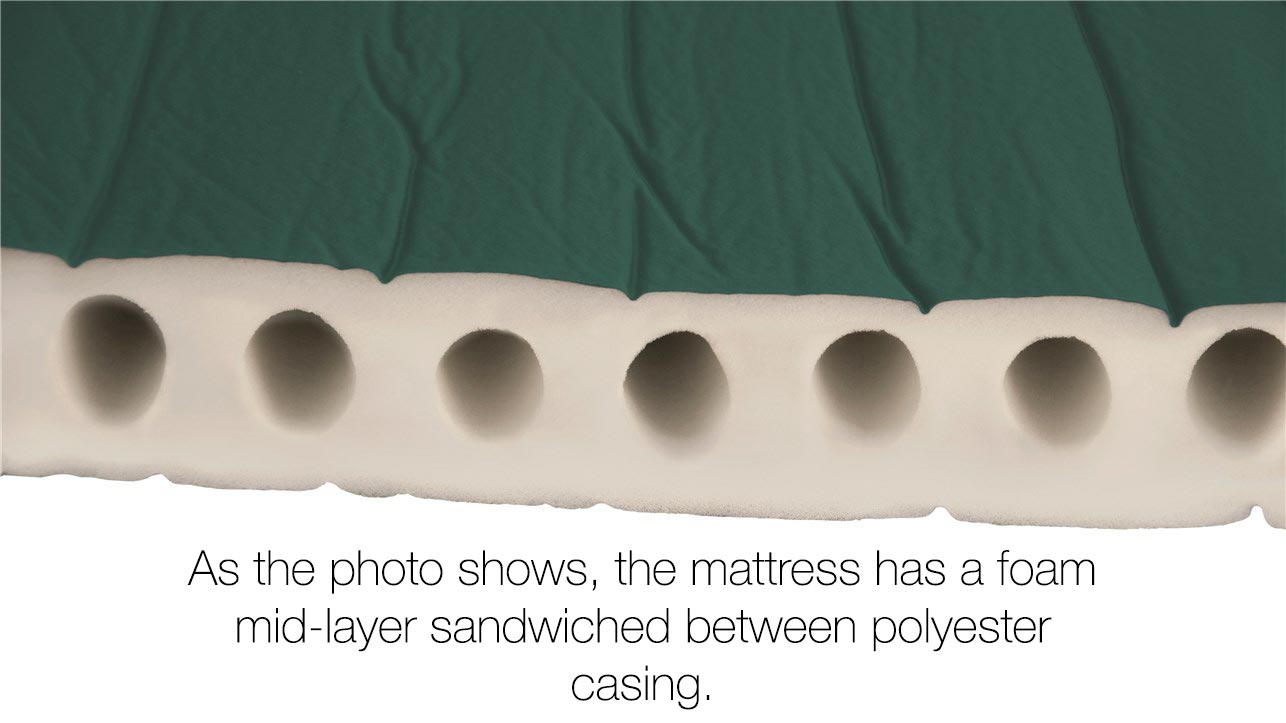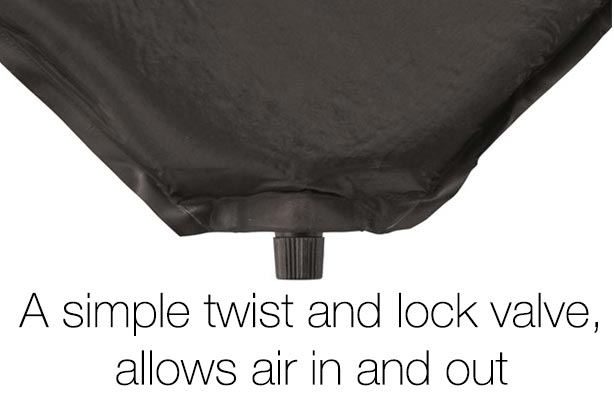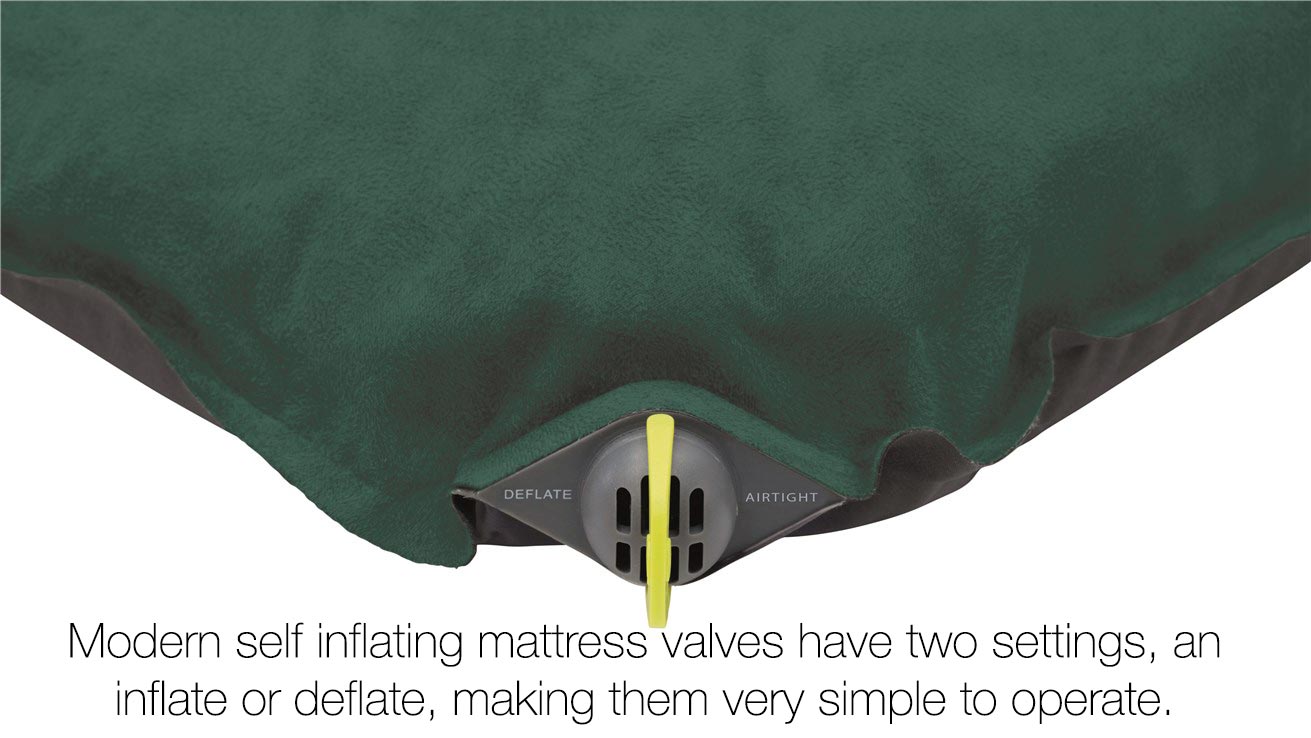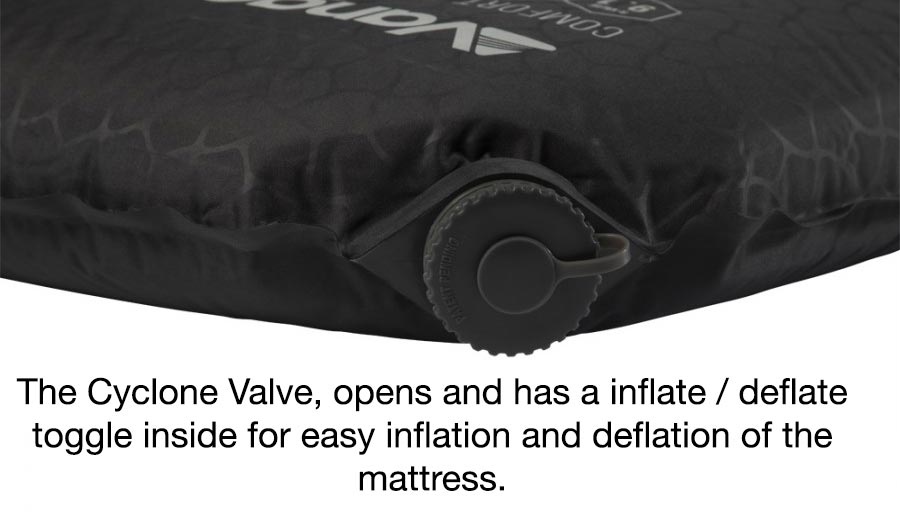
Invented by Thermarest, the self inflating mattress has become increasingly popular with campers over the years, and offers a viable alternative to airbeds, which can often be frustrating for many reasons - they are heavy, and prone to developing leaks.
A self inflating mat offers the perfect balance between comfort, quality and weight. Like airbeds, there are many different types to suit many budgets, and designed to suit different camper’s needs, from super small pack size mattresses, to giant king sized memory foam mats fit for a king. However, all mats work on the same concept and design.
Design

As per the above image, each mattress has foam enclosed inside a sealed fabric outer shell, and uses a valve / or multiple valves, to suck air into the mattress, which will give it a varying degrees of depth. Typically, you will find mattresses from 3cm - 16cm depth on the market, and it depends on the level of comfort you wish to go for, against the pack size of mattress you can transport. The best way to think about a SIM, is a sandwich - the outer casing of the mattress represents the bread, the foam represents the filling.
Fabrics
Nylon
Nylon is typically found on more expensive lightweight air mattresses, and offers a longer lifetime as it is exceptionally hardwearing. The fabric is comfortable, and durable. If durability is top of your shopping list, then look for a mattress with a nylon finish.
Polyester
Polyester is the most popular style of mattress in the marketplace, as it offers reliability, and value for money. Most mats offer a 75 Denier polyester fabric, which is durable without costing the earth.
Polyester Pongee
Creeping into the market over the last few years has been a range of expensive, high comfort and quality mats from Vango and Outwell, in the Shangri-La and Dreamboat collections, made from Polyester Pongee. This is a brushed fabric, which is soft to touch, and offers the comfort of your home bed, hence making it highly popular with family campers.
The Valve System
One of the most important aspects of a self inflating mattress is the valve system used. Single ones may only have one valve, but a double mattress should have two, for easier inflation and deflation. Mats have really developed over the last few years, with Outwell and Vango leading the way with their AFC and Cyclone valves, which are much easier to inflate / deflate the mat with. The modern AFC and Cyclone valves have two settings - inflate and deflate, which essentially makes inflating / packing away the mattress a more simple affair.
Types of Valves
Brass Valve

The original brass valves were just an open valve, so whilst packing a mattress away, you would often find the mattress is still trying to inflate at the same time. This could lead to difficulty packing away the mattress, and there is a technique to packing this type of mattress away.
AFC Valve (Air Flow Control)

The Air Flow Control valve has really modernised the camp mat, offering a change to the way we inflate / deflate and adjust the air inside a self inflating mattress. As per the imagery and video, there is a setting for each.
Cyclone Valve

Works from the same concept as the AFC mattress, and allows a setting for inflating and deflating your mattress.
Foam Mid Core
The foam mid core is at the heart of every single self inflating mattress, and is designed to compress to a small pack size.
You will notice each mattress photo we have shows the foam coring, which is the circular air holes, chopped from each foam mid centre, this allows the mattress to inflate faster as it allows air chambers to be created inside the mattress. This is known as Die Cutting. The advantage is it allows mattresses to quickly inflate, the disadvantage, is that the more foam you remove, the less insulation the camp mat offers from the cold ground. You can check the insulation of each mattress by checking the R-value.
